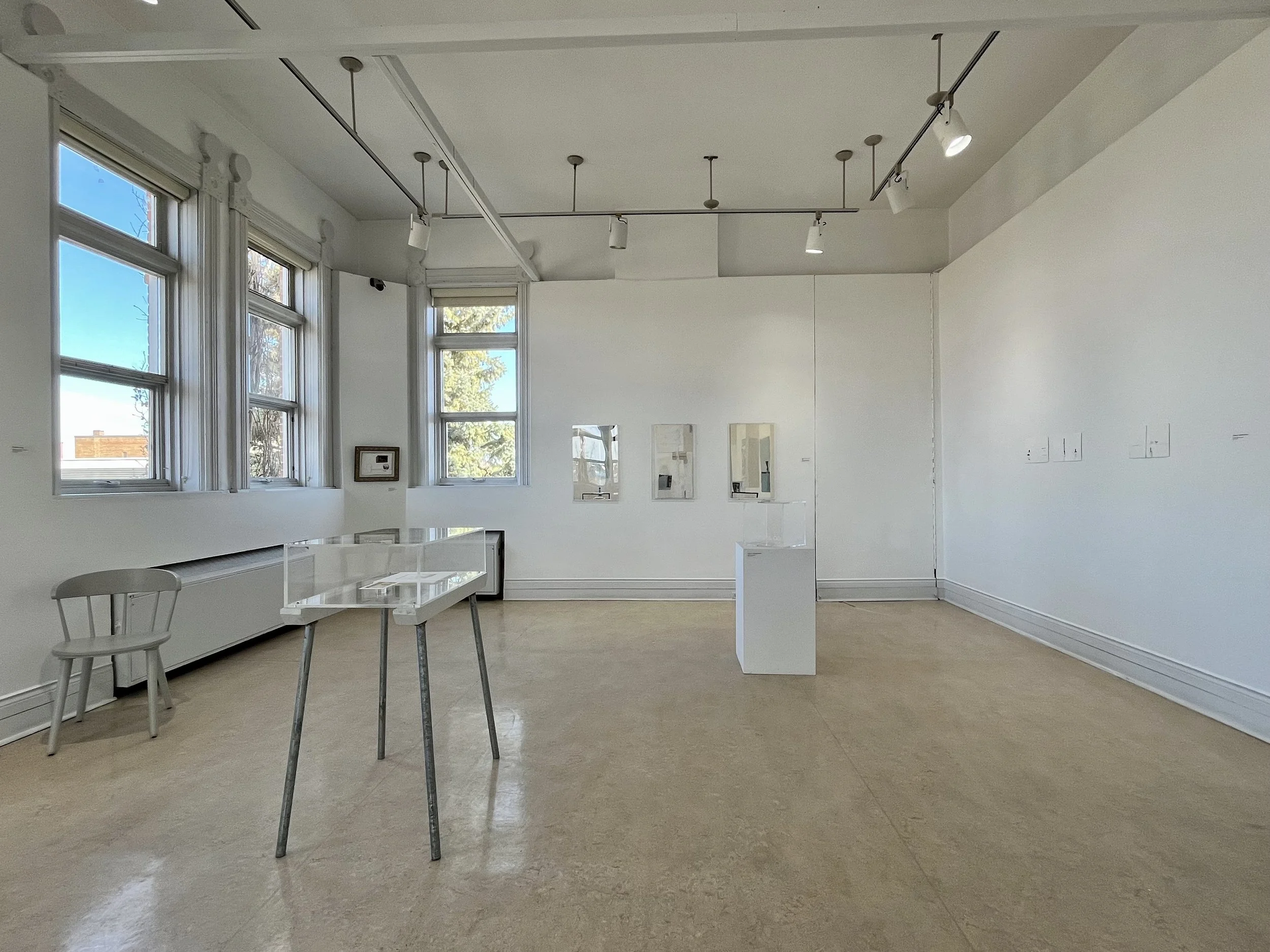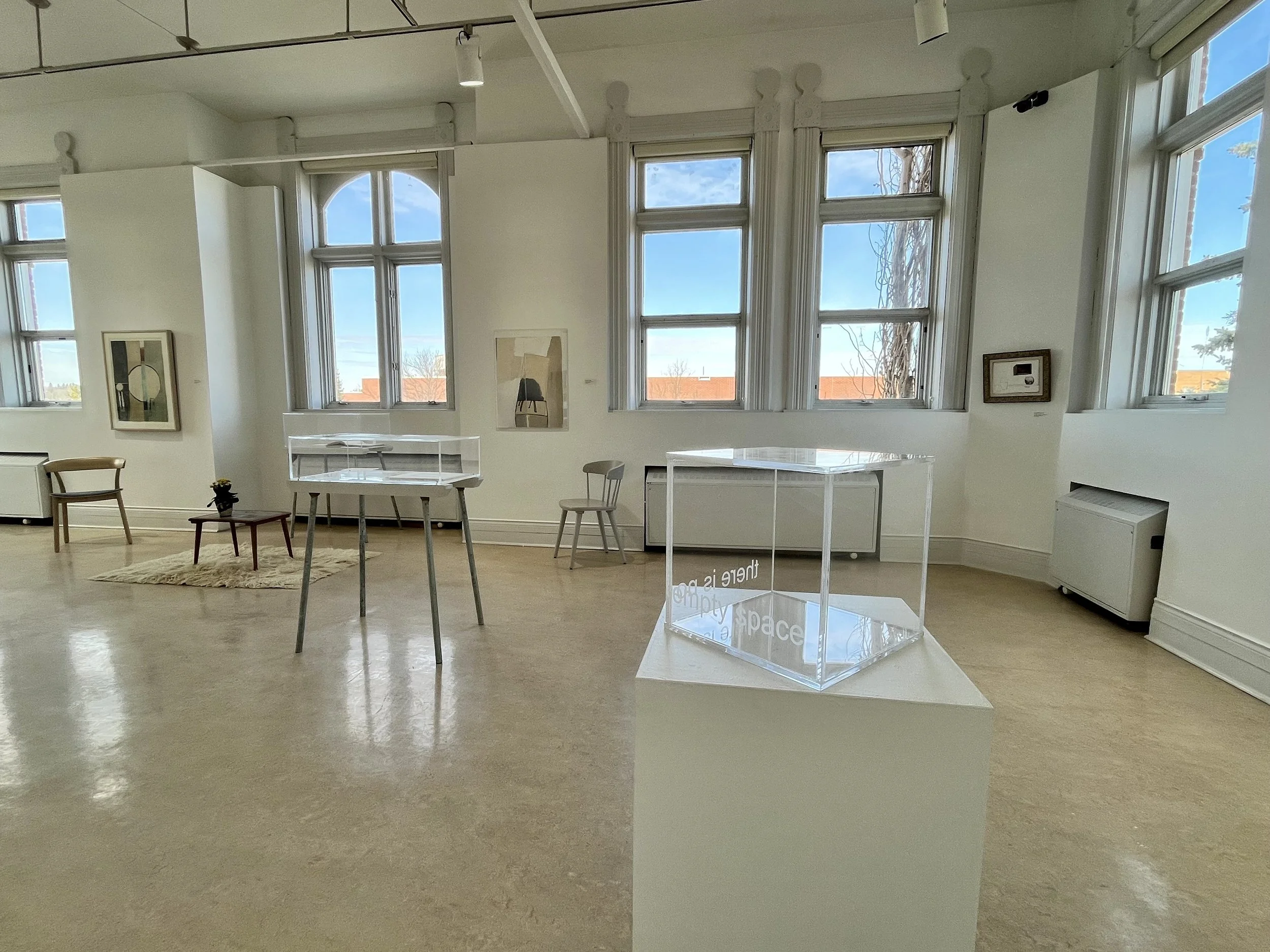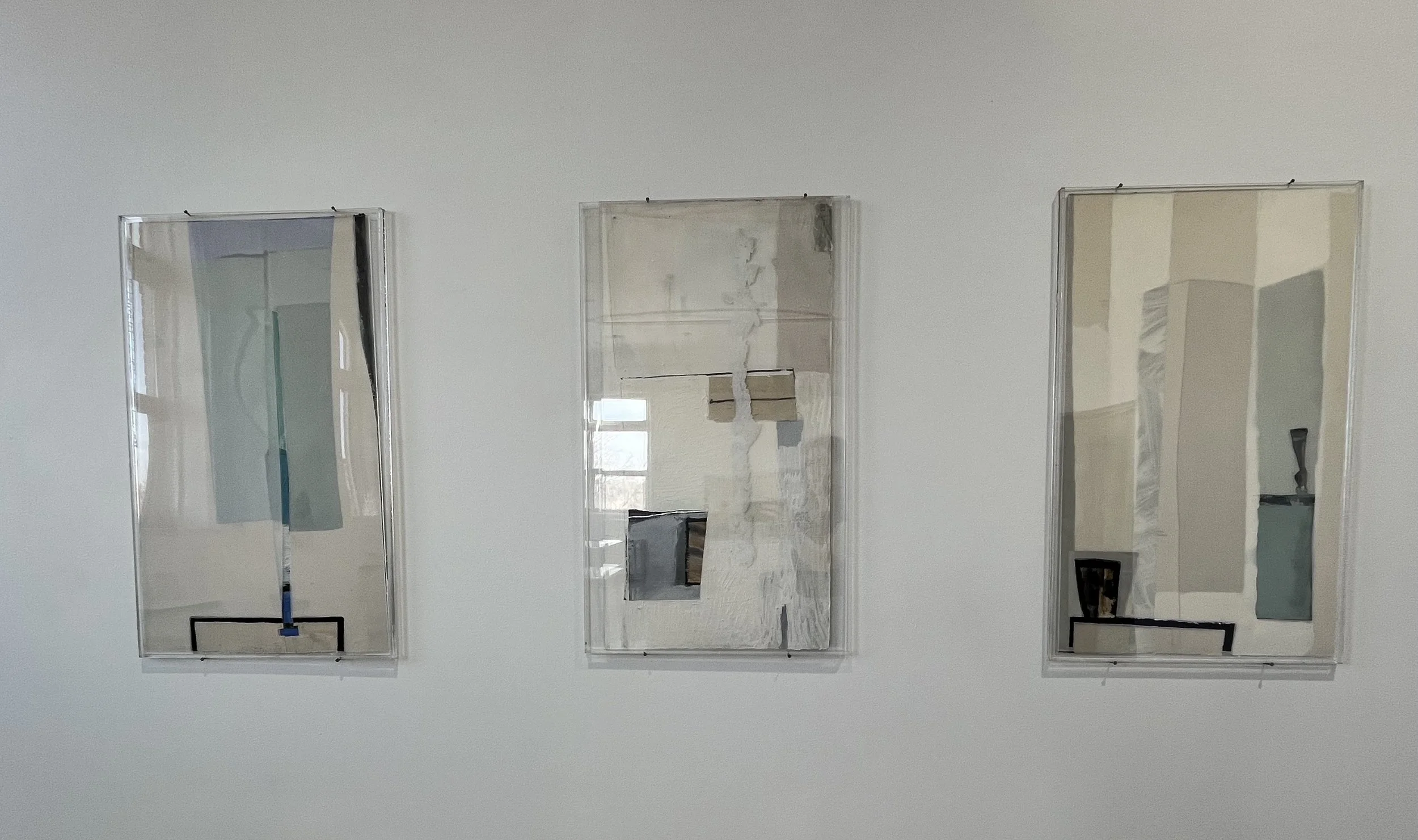From Within to Beyond
Why do humans create art? This question has persisted throughout time. The drive to create gives form to aspects of the invisible, of what is hidden beyond consciousness, and of ideas that persist in our minds. We define these forms as artworks. And artworks are not only about the people who make them: the meaning of art is as much about the viewers as of the artist.
In the final installation of this exhibition, the materiality of visual art and the psychology of seeing culminates in a series of work that involves reworking, recollection, and reflection. In art, there is always a chance to do something; there is always something with which to work. This sentiment is embodied in Craig Block Studio, where the depiction of Connie Freedy’s studio in 2002 represents constant looking and constant working. It shows numerous works in progress, still life set ups, and extended space through mirrors and windows. The same atmosphere is present at George’s current studio in Christopher Lake, where numerous works are in progress or complete. When the latter are not satisfactory - regardless of whether they were finished recently or decades ago - they are subject to being cut, cropped, collaged, or covered. In the Rework pieces, he has used these very actions to fashion older works into fresher, stronger pieces. For example, applications of paint on top of older works creates new negative space to bring forth patterns or connections of objects; or, cutting and pasting creates colour relationships not previously seen.
Recently, George decided to sandwich three of the Rework pieces between pieces of fitted plexiglass. Incorporating this reflective material enhances the optical experience of the pieces. We look at the subjects and formal elements of the works, and we see ourselves and the surrounding environment in the shiny surfaces. Now, the ideas, atmosphere, and imagery of the artwork are contained not only within the paper and canvas, but they extend beyond the physical artwork and into the realm of the John V. Hicks Gallery, the reflections of the window panes, and the tops of the buildings and trees outside. The plexiglass binds the artwork with the life that happens around it.
The imagery and meaning of the Rework pieces shift. Depending where they are placed and who is in front of them, different visual content will be shown. What’s more, the content and meaning of these pieces are always in flux. They morph every day, every hour, and every minute. From subtle physical changes in light to overall social or political climates, the artworks are an active part of our world that is constantly moving. Indeed, there is no empty space: no empty reflections, and no empty art. It is all rife with meaning, shaped by the personal, political, social, and aesthetic life experiences of its viewers. In art, the narrative is turned to us.
The journey through seven series of works in the installations of Looking Through Time demonstrates that George is a person who goes beyond the definition of an artist. The label of “painter” is too narrow, the category too singular. His works achieve the rare act of ongoing exploration and discovery, of contemplation and openness. While his works are at once about the stillness of beauty, an expansive sense of space, and the registration of mental thought, they are also about time. Currents of time run throughout the works: latent time is embodied in the history of George’s life events and thoughts that contributed to the original creation of the works; present time is enacted in the moments that viewers take in the works for the themselves; and possibilities of the future occur in how viewers interpret the content of the artworks. Art offers renewal, coming from within and reflecting outward to something beyond.
Jesse Campbell, Curator
George Glenn, "Time and Memory: Script," 1990, acrylic on paper with plastic insert, 22 x 29"
George Glenn, "Studio Table," 2013, acrylic on canvas board, 24 x 32”
George Glenn, "Interior Series #1," 1994, acrylic on paper, 7.5 x 11.5"
George Glenn, "Interior Series #2," 1994, acrylic on paper, 7.5 x 11.5"
George Glenn, "Interior Series #3," 1994, acrylic on paper, 7.5 x 11.5"
George Glenn, "Connie’s Studio," 2002, oil on canvas, 7 x 4’
George Glenn, "Accordion Drawing," 2003, watercolour and pen on paper,
George Glenn, "Rework: Circle," 1995, acrylic and graphite on canvas and paper, 20.5 x 21.5”
George Glenn, "Rework: Legs," 1995, acrylic and charcoal on canvas and paper, 30 x 22.5”
George Glenn, "Ingres Placemat," c. 1995, acrylic on placemat with flowered frame, 14 x 17.25”
George Glenn, "Rework," 1995, acrylic and graphite on canvas with plexiglass overlay, 30.5 x 18”
George Glenn, "Exterior Series," 1994, acrylic on paper, 7.5 x 11.5"
George Glenn, "Exterior Series #1 and #2," 1994, acrylic on paper, 7.5 x 11.5"
George Glenn, "Exterior Series #3," 1994, acrylic on paper, 7.5 x 11.5"








































